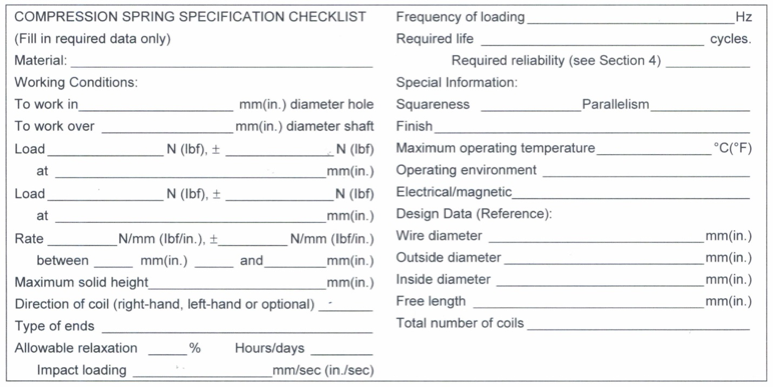The section below gives technical information on compression spring design including; different spring body shapes we are capable of producing, wire diameter ranges we are capable of using, spring dimensional images and other consideration that might have an impact on the compression spring used in your application.
Technical illustrations provided by the “Spring Manufacturers Institute Handbook Of Spring Design”
Springs are a more technically engineered product than some people realize. Industrial Spring has been manufacturing custom compression springs for our customers for more than 50 years. We use Advanced Spring Design software that is based on the Spring Manufacturers Institute Handbook of Spring Design to assist you in achieving the best design to work in your specific application. Just contact us at 816-741-6073 and we will be glad to help.
Per Spring Manufacturers Institute Handbook of Spring Design, commonly used compression spring terminology includes:
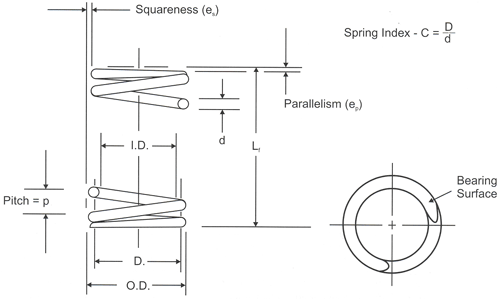
Whatever your compression spring design needs Industrial Spring has the ability to produce your part. We have a wide range of CNC coiling machines that can manufacture custom compression springs with wire diameters as small as 0.008” or as large as 0.500” (0.203 mm to 12.7 mm) and any size wire in between.
Industrial Spring manufactures custom compression springs from all types of material. The most common material types for compression springs are music wire, hard drawn, stainless steel (type 302, type 316 and type 17-7 PH), oil tempered, chrome silicon, and phosphor bronze. We also produce compression springs in some of the more exotic types of material such as C276, Inconel 600 & 750, Monel, Beryllium Copper and others.
We stock several of these material types in different diameters in order to provide our customers with the shortest lead times possible.
Some Common Compression Spring Materials Include:
You can learn about the suitable uses of each material type in the Properties of Materials chart.
Industrial Spring manufactures four different body shapes for compression springs.
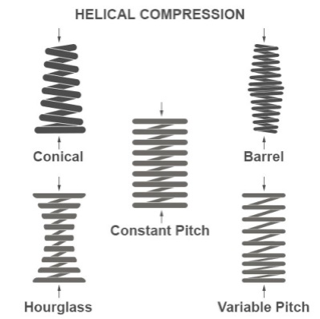
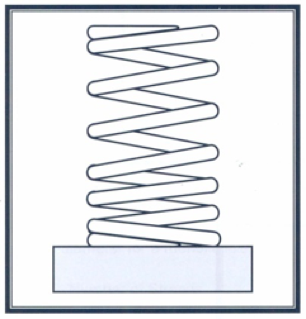
Typical Variable Pitch Helical Compression Spring
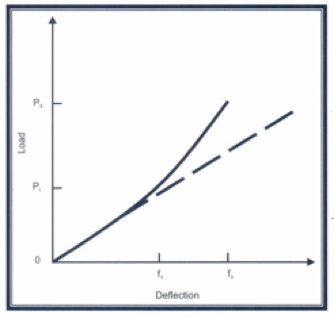
Typical Load Deflection Curve for Variable Pitch Spring (Solid Line)/p>
Total number of coils is counted from tip to tip. Springs with closed ends or with closed and ground ends have one inactive coil at each end. Springs with open ends are considered to have virtually no inactive coil. Springs with open ends ground are considered to have about one-half inactive coil at each end.
The active coils are what make a spring a spring. The active term should really be applied to any portion of a spring that stores and releases energy. In the case of a compression spring, the active portion will expand as the spring is compressed. The opposite is typical of an extension spring. The action of a clutch spring tightening down on a shaft is typical of the diameter change as a torsion spring winds up.
When designing a spring and specifying its dimensions, it is critical that the number of coils is counted correctly, as this can have a huge effect on the strength of the spring. It is a straightforward process – simply start at one end of the spring, where the wire has been cut, then follow the wire round – every time you go through 360° that counts as a full coil (180° = ½ coil; 90° = ¼ coil etc.) The compression spring pictured has five total coils (not six). The same method applies to extension springs and torsion springs.
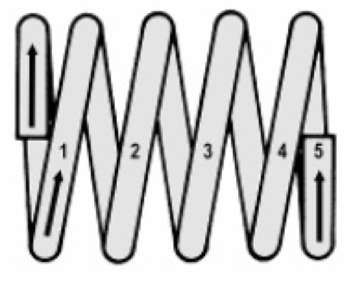
A spring can be either left or right hand coiled. If the index finger of the right hand can be bent to simulate direction of coil, so that the fingernail and coil tip are approximately at the same angular position, the spring is right-hand wound. If the index finger of the left hand simulates the coil direction, the spring is left hand wound. If the direction of coiling is not specified, the direction is considered optional and may be coiled in either direction. Nested compression springs with small diameter clearances should be coiled in opposite directions.
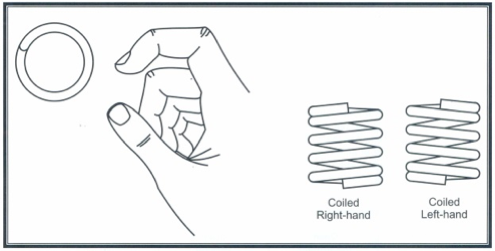
There are four basic types of compression spring ends, as shown. The type of ends specified affect the pitch, solid height, number of active and total coils, free length, and seating characteristics of the spring. The most common end types are closed but different ends are appropriate for different applications.
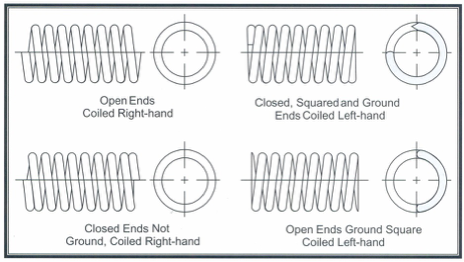
There are other, more complex design considerations that we are capable of producing and assisting with such as multiple compression springs used in series, either stacked of parallel (nested).
As a leading compression spring supplier, we use state-of-the-art CNC coiling machines with in-line monitoring cameras, length gauges and sorters. Our in-line cameras and sorters monitor the outside diameter and free length of each spring and sort out any springs that are out of tolerance. We grind the ends of compression springs using CNC grinders with crush and down feed grinding capability.
Contact Us Today To Learn How We Can Meet Your Compression Spring Production Needs.
